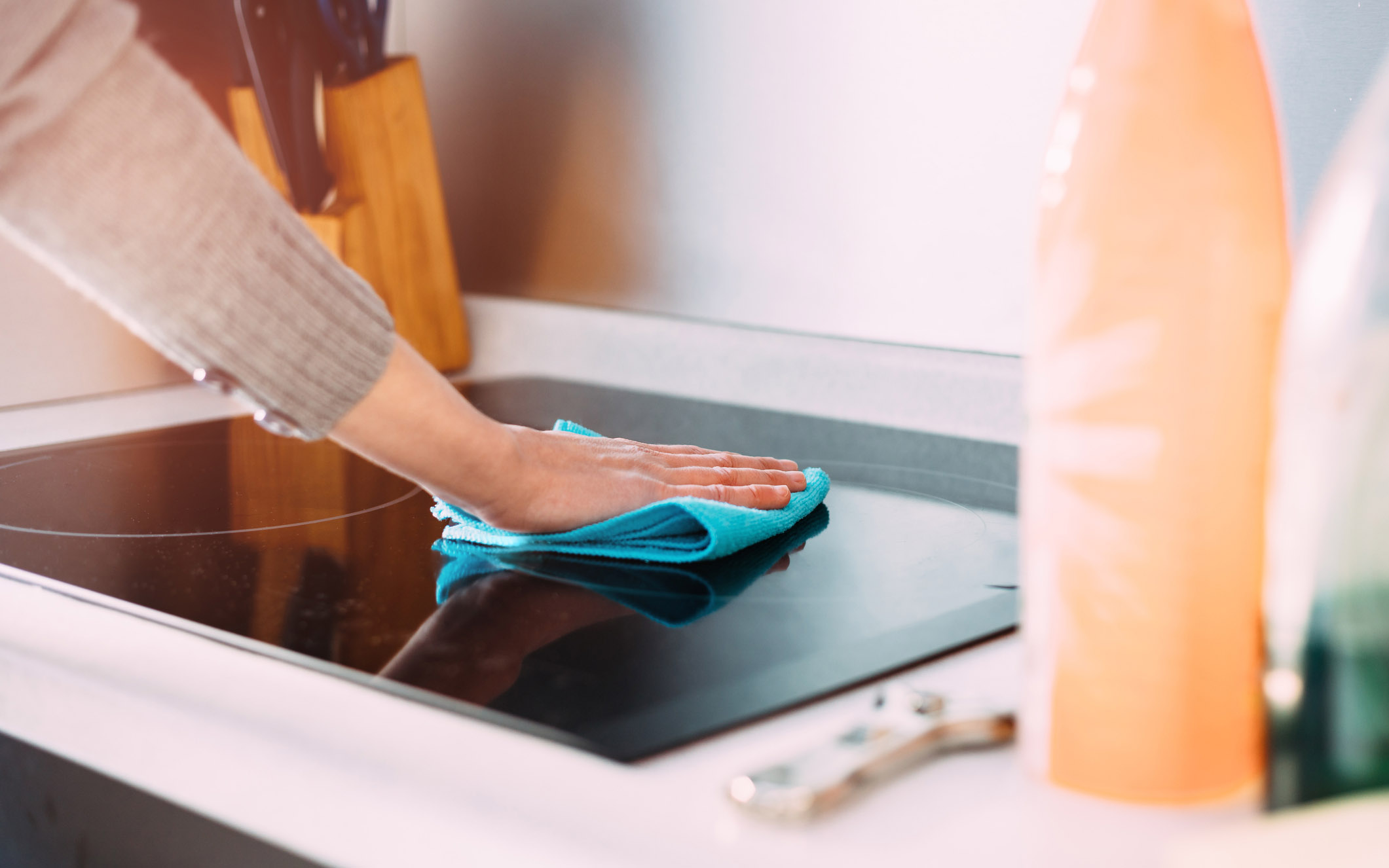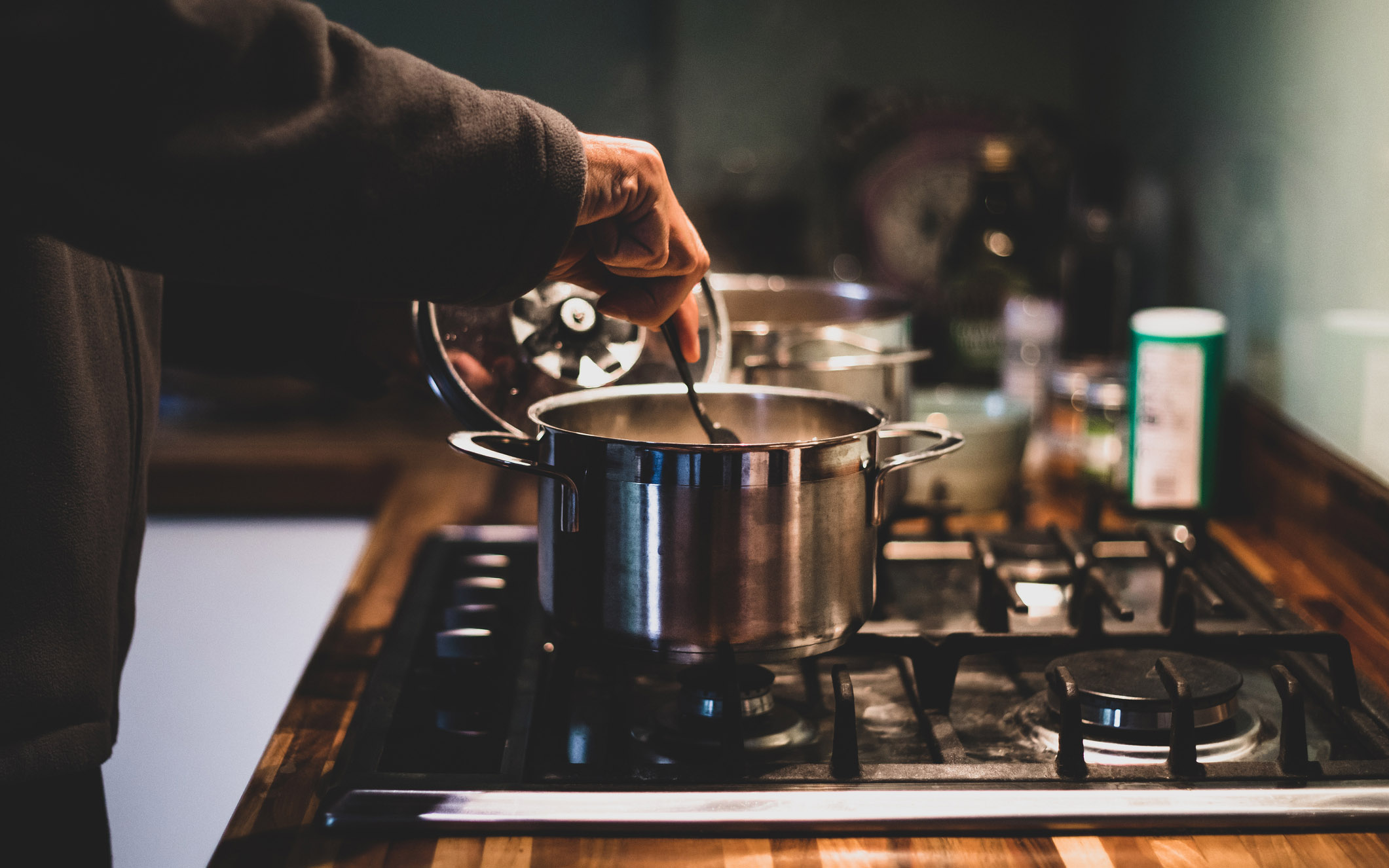How to clean a stovetop thoroughly to remove burnt-on food
If you're wondering how to clean a stovetop, look no further than our step-by-step guide

Knowing how to clean a stovetop thoroughly to remove burnt-on food is a sign that you've mastered your household cleaning routine, and is a skill that will help to keep your appliance in the best possible condition for years to come.
Of course, home-cooked meals are great and much healthier for us—but no doubt doing so also means dealing with a messy kitchen more often. Nothing kills the mood of a delicious dinner more than copious amounts of time doing the kitchen cleaning.
Fortunately, there are quick and easy ways to restore your stovetop to perfection, regardless of whether you attack the problem right away, or let the grease and burnt food build up a little longer than necessary.
And when you're done cleaning, see our guide to the best cookware and the best non-stick pans to buy right now too, to upgrade your kitchenware.
How often should I clean my stovetop?
It may not seem like an obvious part of the kitchen to maintain regularly, but just like any other item in your home, your stovetop need to be taken care of. Stoves can be a costly appliance to replace, and regularly cleaning it ensures it stays in tip-top shape for much longer.
But if you're wondering how to clean a stovetop, you might also be curious about how often it actually needs to be done. Well, as you might suspect, cleaning your stovetop is something that should be done daily—or every other day, at the very least.
It might be tempting to skip the post-meal cleaning, especially when you're feeling extra tired or in a rush, but tidying up right after you're done is a good habit to develop. The same applies when it comes to how to clean a burnt pan, too. Keeping your stovetop on a daily basis clean makes your kitchen feel cleaner overall, and doing the task reduces lingering bits of food from attracting bugs and other unwanted guests in your home (our guide to how to get rid of fruit flies might also come in handy if this is an issue for you). Lastly, a regular cleanup habit means less build-up, and so less time and effort on a big clean later.
Sign up for the woman&home newsletter
Sign up to our free daily email for the latest royal and entertainment news, interesting opinion, expert advice on styling and beauty trends, and no-nonsense guides to the health and wellness questions you want answered.
How to clean your stovetop depending on the type
How you tackle cleaning your stovetop will largely depend on how deep a clean you need to carry out, and what type of stovetop you have—be it ceramic or gas. Burnt-on food can be tough to remove, so you may need the help of stronger ingredients like baking soda and vinegar, while a light daily clean requires a less abrasive solution. We recommend cleaning your stovetop daily, with a deep clean once a week and when required after spillages.
How to clean a ceramic stovetop
Ceramic stovetops (which are often induction or electric cookers), are very simple to clean, but you might want to vary how you clean them depending on whether it needs a deep clean or a quick spot clean.
1. A deep clean:
For this method, all you need is a spray bottle full of vinegar, baking soda, and a hot, damp towel. Combined with just a smudge of elbow grease, these common household ingredients will have your ceramic stove shining like it is brand-new. This cleaning solution is safe, harmless to your body, and to the environment. In fact, baking soda is also one of the best household ingredients to use when working out how to clean copper, how to clean an oven, and how to clean grout, too.
So when it comes to how to clean a stovetop made out of ceramic, just follow these steps:
- Spray enough vinegar to cover your stovetop without creating unnecessary puddles—if you have a gas stove, make sure to remove burner heads and caps before spraying
- Sprinkle a generous amount of baking soda over every inch of your stovetop surface (you can also use baking soda when learning how to clean an iron)
- Carefully place the hot, damp towel over the stove's surface
- Wait 10-15 minutes to allow the natural solutions to mix, lifting food particles and grease from your stove
- Remove the towel and wipe up the remaining cleaning solution

2. A spot-clean
Whether you have managed to keep your stovetop free of food build-up or you've recently done a thorough cleaning, sometimes all you need to do is a quick clean—this might be something you do once or twice a day to prepare the area for cooking again. For this method, all you need is a washcloth, soap, water, and some vegetable or olive oil to lift burnt sauce or grease.
Here's what to do:
- Dampen a washcloth with warm water and soap and gently wipe down any loose food particles and crumbs
- If you have any stubborn cooking spots, add a little oil and move your hand in circular motions with your cloth to loosen and lift up
- Wipe up the excess oil with your damp washcloth
How to clean a gas stovetop

Cleaning a gas stovetop is a little bit more complicated compared to a ceramic stovetop, but still employs many of the same techniques.
When cleaning a gas stovetop during a deep-clean, you need to be mindful of the different parts that need cleaning, so your routine may involve a little bit of dismantling to really get into the nooks and crannies of the stove.
1. A deep clean
To deep clean your gas stovetop properly, follow these simple steps:
- The first thing to do is remove your burner caps and heads from the stovetop
- Then, drop the burner caps and heads into your sink and wash them up with a non-abrasive cloth or sponge with a little soap. If the build-up is more than your sponge can handle, consider gently using something to lightly scrape off the burnt-on food, like a butter knife or food scraper
- Then, be sure to clean out the fuel ports of the burner heads to make sure they aren't blocked with any food. This can be a hazard, and stop the hob working as well as it should
- Now, you can follow a similar process to cleaning a gas stovetop. Using either dish soap and water, or perhaps baking soda, scrub the base of the hob in circular motions, slowly and gently so as not to cause any damage
- Wipe clean the hob with a damp cloth, and sweep away any bits of food into the bin
- If you're really struggling with any burnt-on food, it's worth noting that you can use a scraper to very gently peel off anything remaining. Well very useful for super-stubborn stains, we'd advise using this sparingly on your hob, as they can potentially damage the surface
If you just need to give your gas stovetop a quick spot-clean—for example, if something has spilt and burnt on during cooking—there is a quick method you can employ to get the job done.
2. A spot-clean
- Mix together a paste of equal parts water and baking soda. Baking soda is better for gas stoves, which need to be rougher and more abrasive to clean
- Use a clean cloth to scrub at the stain, scrubbing until you can no longer feel it on the hob
- Then, wipe clean with a clean cloth and a bit of water
Can I use store-bought cleaners?
If you're looking for something you can just pull out of the cabinet when working out how to clean a stovetop, grabbing something from the store can be a good solution as well. Even better, all you have to do is spray them, and then rinse it with a wet washcloth to get the job done. For those occasions, finding a specialized formula might be best, depending on the type of cleanup you require.
Here are some options for the best store-bought solutions:
- Degreasers can help to cut through slick, oily messes
- Paste-like solutions work great for stuck-on foods
- Magic Rubbers are a nice mix of cleaning solution and sponge for really tough, burnt-on spots
Store-bought options are available in traditional and natural formulas. While they are convenient, you might prefer mixing up your own in-home solutions.
Amy Hunt is an experienced digital journalist specialising in homes, interiors and hobbies. She began her career working as the features assistant at woman&home magazine, before moving over to the digital side of the brand where she eventually became the Lifestyle Editor up until January 2022. Amy won the Digital Journalist of the Year award at the AOP Awards in 2019 for her work on womanandhome.com.
